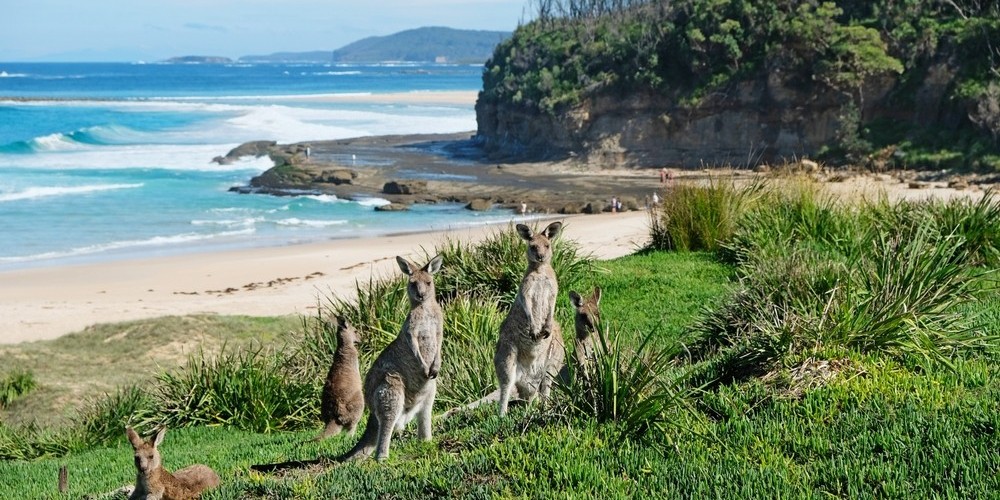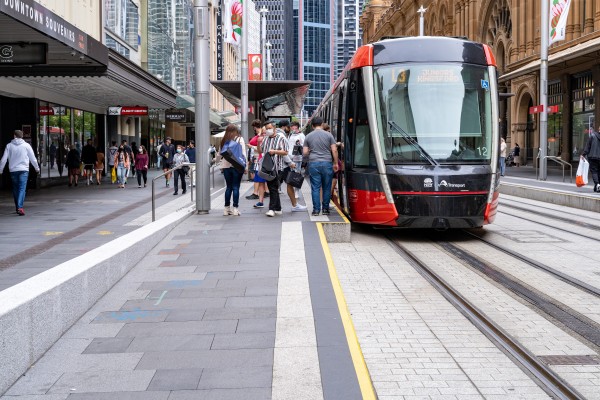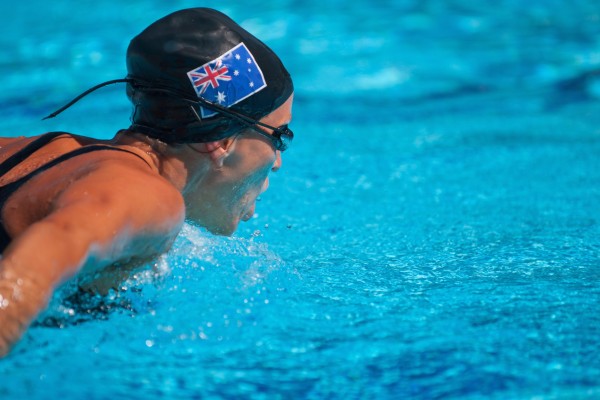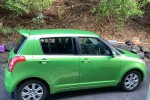5 famous native Australian animals - and where to see them

Kangaroos, koalas, dingos and Tassie devils, there is no shortage of weird and wonderful creatures in Australia. In fact Aussie wildlife is one of the big draw cards for visitors and expats alike. While zoo and enclosure encounters with native australian animals are a dime a dozen, seeing these creatures in the wild takes a little more time, care and research.
In this guide we’re sharing the best spots to see the most famous Australian animals, optimal times of year for natural encounters, and what you need to know before you head out into the wild.
Keep reading to learn where to see:
Kangaroos
 Kangaroos are one of Australia’s most beloved residents and symbols. Spotting these oversized marsupials in their natural habitat is a special experience whether you’re a tourist or local.
Kangaroos are one of Australia’s most beloved residents and symbols. Spotting these oversized marsupials in their natural habitat is a special experience whether you’re a tourist or local.
There are four main species of kangaroo in Australia: the Eastern Grey, Red Kangaroo, Western Grey and the Antilopine Kangaroo. While they’re found in different locations and vary in size, they all prefer open areas where they can graze freely.
Best locations to spot kangaroos in the wild in Australia
-
Kangaroo Island, South Australia
As the name suggests, Kangaroo Island in South Australia is a top spot to see kangaroos in the wild. With a thriving population of roos you’re highly likely to see them first hand - particularly the Western Greys which are in very healthy numbers here.
-
Murramarang National Park, New South Wales
On the south coast of NSW is the beautiful Murramarang National Park. Known for both beaches and bushland, this area is well known as a kangaroo hot-spot. Eastern Greys are frequently seen grazing here - particularly early morning or late afternoon.
-
Noosa National Park
Noosa National Park is loaded with lush rainforest and is surrounded by stunning coastlines - it’s also a great place to spot an Eastern Grey kangaroo. The best time for roo spotting is in the early hours of the morning.
Best times for kangaroo spotting
Kangaroos are seen year-round across the country. However, springtime is when you’re most likely to see baby joeys peeking out of the mother roo’s pouch. Dawn and dusk are also great times of day as this is the kangaroo’s grazing time.
Tips for a successful kangaroo spotting adventure
-
Be patient: Wildlife watching requires patience. Arrive early and spend time quietly observing your surroundings.
-
Use binoculars: Bring a pair of binoculars to enhance your viewing experience from a distance without disturbing the animals.
-
Respect wildlife: Maintain a respectful distance and avoid feeding or approaching kangaroos. They are wild animals and should be treated as such.
Koalas
 Introducing another member of the marsupial family and one of Australia’s most adorable animals: the koala. While often incorrectly referred to as koala bears, these cuddly looking, eucalyptus lovin’ Aussie natives are not in any way related to the bear family.
Introducing another member of the marsupial family and one of Australia’s most adorable animals: the koala. While often incorrectly referred to as koala bears, these cuddly looking, eucalyptus lovin’ Aussie natives are not in any way related to the bear family.
Koalas spend up to 18 hours a day resting and the remaining time chomping on eucalyptus leaves high in the treetops, this means they can be a little tricky to spot.
Best locations to spot koalas in the wild
-
Great Otway National Park, Victoria
This park features lush forests with plenty of eucalyptus trees - making it the perfect habitat for koalas.
-
Port Stephens NSW
Port Stephens is home to a number of koala hotspots. Tomaree National Park is a particularly good place to see them in the wild as it has dedicated walking trails that pass alongside the eucalyptus trees. An early morning or late afternoon visit will give you the best chance of seeing koalas active and feeding.
-
Kangaroo Island
Turns out Kanagaroo Island isn’t just a roo hotspot. The Flinders Chase National Park and the area around Seal Bay are excellent locations for koala spotting. The best time to visit is during the warmer months from late spring to early autumn.
Best times for koala spotting
Like kangaroos, koalas can be spotted year round in various locations across Australia. However koalas tend to be less active in the heat of summer and in the cold of winter.
Spring is the breeding period meaning koalas are more active. This time of year also offers the special opportunity of spotting mother koalas with their joeys.
Tips for a successful koala spotting adventure
Be quiet and patient: Koalas are naturally shy and will retreat if they feel threatened. Approach quietly and give them space.
Use binoculars: Koalas are excellent climbers, often resting high in eucalyptus trees. Use binoculars to scan the treetops for their distinctive shapes.
Dingoes
 Dingoes are a subspecies of the domestic dog believed to have arrived in Australia about 4,000 years ago. They are found in various habitats from desert to forest and typically hunt in packs.
Dingoes are a subspecies of the domestic dog believed to have arrived in Australia about 4,000 years ago. They are found in various habitats from desert to forest and typically hunt in packs.
It’s important to remember that dingoes should not be treated in the same way as your family pet - they may seem friendly enough but they can be highly unpredictable.
Look but don’t touch and keep a safe distance at all times from these Aussie natives.
Best locations to spot a dingo in the wild
-
K’gari (Fraser Island) in Queensland
K’gari or Fraser Island, is one of the best places in the country to see dingoes in the wild. This UNESCO World Heritage site is home to a large population of dingoes with regular sightings on the beach or near freshwater lakes.
-
Daintree National Park
The Mossman Gorge and Cape Tribulation regions of the Daintree National Park are prime spots for seeing dingoes in the wild.
-
Outback NSW
The vast open spaces of the Outback provide an excellent opportunity to spot dingoes in their natural habitat. Warrumbungle National Park, in particular, is known for its diverse wildlife, including dingoes.
Best times for dingo spotting
Spring and Autumn are the best times of year for spotting dingoes in the wild. While they are visible year round, dingoes are more active in the milder months. Early morning or late afternoons offer the best opportunities for sightings.
Tips for a successful dingo spotting adventure
Stillness and patience: Dingoes can be a little elusive so being as silent and still as possible will increase your chances of spotting them.
Use binoculars: This will help you experience these animals in the wild without risk of disturbing them or putting yourself in harm's way.
Respect that they are wild: Dingoes are a wild animal and should be treated as such. Always keep a safe distance and never attempt to feed or approach them.
Join a guided tour: This is the safest way to experience wild dingoes. K’gari in particular can be quite challenging terrain to travel so a tour is the safest and most reliable approach to spotting dingoes.
Tasmanian Devils
 Tasmanian devils, with their unique appearance and fierce reputation, are one of Australia’s most intriguing wildlife species. Known for their distinctive growls and aggressive feeding habits, these marsupials are native to Tasmania and are a vital part of the island's ecosystem.
Tasmanian devils, with their unique appearance and fierce reputation, are one of Australia’s most intriguing wildlife species. Known for their distinctive growls and aggressive feeding habits, these marsupials are native to Tasmania and are a vital part of the island's ecosystem.
Unfortunately, Tasmanian devils face threats from a contagious cancer known as Devil Facial Tumour Disease (DFTD), which has led to significant declines in their wild population. Due to this decline, it can be hard to spot them out in the wild - but conservation parks offer a great alternative.
Best locations to spot a Tasmanian Devil
-
Tasmanian Devil Unzoo, Taranna
Located on the Tasman Peninsula, the Tasmanian Devil Unzoo provides an opportunity to see these creatures up close in a conservation setting. The facility focuses on education and rehabilitation, and you can observe Tasmanian devils in naturalistic enclosures. Evening feeding sessions offer the best chances to see them active.
-
Maria Island National Park
Maria Island is one of the few spots where you may find a Tasmanian devil in its natural habitat. The island is a national park with limited human interference, making it a great spot for wildlife viewing. The best time to see them is in the late afternoon and early evening as they become more active.
-
Freycinet National Park
While spotting a Tasmanian devil at Freycinet National Park can be challenging, this location is home to a small population of the marsupials. Early mornings and late evenings are the best times to keep an eye out for them.
Best times for Tasmanian Devil Spotting
Tasmanian devils can be seen year-round, but certain seasons and times of day offer better opportunities:
Spring: Spring is a great time to spot Tasmanian devils, as they are more active and are often seen caring for their young.
Summer: Summer can is a time when devils are more active during cooler parts of the day. Early mornings and late evenings are ideal for sightings.
Winter: Winter can be a challenging time for spotting devils, as they tend to be less active in colder weather. However, on clear, sunny days, you might still catch glimpses during twilight.
Tips for spotting a Tasmanian Devil in the wild
Keep an eye out for tracks or other signs of their presence, especially in areas where they are known to roam.
Move quietly: Tasmanian devils are naturally shy and nocturnal. Approach quietly and be patient to increase your chances of spotting them.
Crocodiles

Crocodiles are among the most ancient and most terrifying of all of Australia’s native animals. Known for their powerful jaws, hunting tactics and impressive size, these creatures aren’t ones you’d like to come across by accident.
But, there are ways you can safely experience these majestic reptiles - and none of them involve getting too close to their famous death roll.
In Australia, there are two main species of crocodile found in the wild: Saltwater crocs and Freshwater crocs. Saltwater crocodiles are the largest living reptile on the planet and are found in rivers, estuaries and coastal areas. Freshwater crocodiles are smaller and found in inland fresh waterways.
Best locations to spot a crocodile
-
Far North Queensland
The waterways around Cairns and Port Douglas are known for frequent crocodile sightings with the Daintree River being a particularly famous croc spotting location. As is ALWAYS the case with crocs - a guided tour is the safest way to encounter these predators in the wild.
-
Kakadu National Park, Northern Territory
Kakadu is a UNESCO World Heritage site and is well-known for its Saltwater and Freshwater Crocodiles. The park features numerous wetlands and rivers, providing ideal habitats. The Yellow Water Billabong is especially known for its crocodile population.
Best times to spot crocs in the wild
Dry season (May to October): In Australia’s tropical regions, the dry season is the best time for crocodile spotting. Water levels drop, and animals congregate around the remaining water sources, making them easier to find.
Early morning and late afternoon: Crocodiles are most active during the cooler parts of the day. Early morning and late afternoon are prime times for sightings as they bask in the sun or hunt for prey.
Breeding season (August to November): During the breeding season, male crocodiles can be more active and vocal, increasing your chances of spotting them. This is also the time when females are seen guarding nests.
Croc-spotting tips
Keep a safe distance from crocodiles and follow guidelines provided by guides or local authorities. Crocodiles are wild animals and can be dangerous.
Use binoculars: Bring binoculars to spot crocodiles from a safe distance. They can often be camouflaged in their surroundings, making binoculars helpful for spotting them.
Join a guided tour: Consider taking a guided tour, which can provide expert knowledge and ensure your safety while maximising your chances of seeing crocodiles.
Never feed or provoke crocodiles: Observing crocs in their natural habitat is best done with respect for their space and behaviour.
Your Aussie wildlife adventure awaits
Spotting Australia’s native wildlife, whether it’s the iconic kangaroo cuddly koala or predatory crocodile, offers an experience you won’t forget. These animals are not just symbols of Australia; they represent the unique ecosystems of the region. By choosing the right locations and times to see them, you’ll get a closer look at nature in action.
So gear up, head into the wild, and prepare for an exciting journey that showcases Australia’s amazing wildlife.
And, if your Aussie adventure is still in its planning phase, we can help you there too. At Upmove we work with affordable, reliable removalists from all over the country to ensure you get safely and efficiently to your new destination down under.
What do our customers say?




























